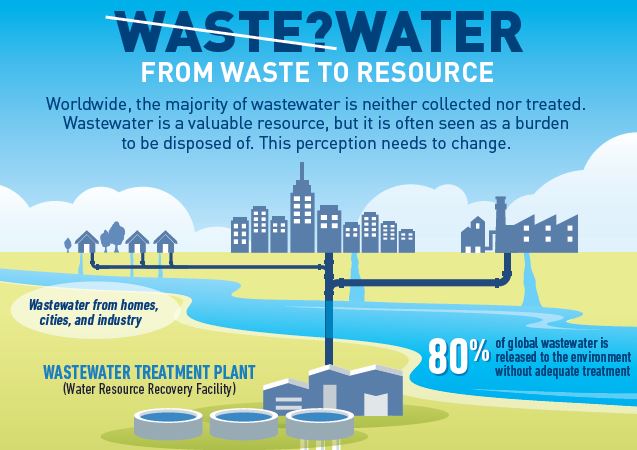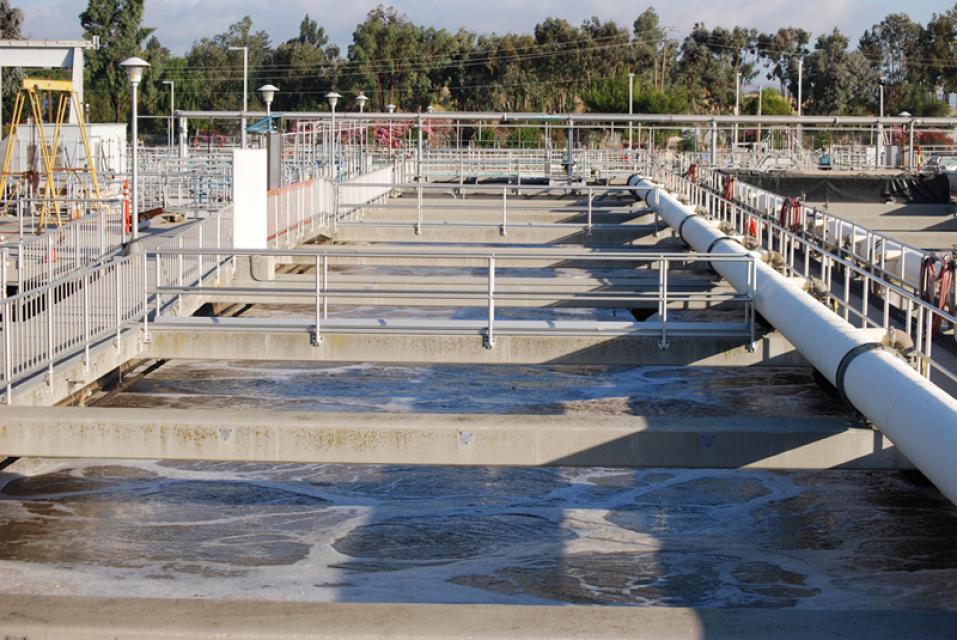Top Reasons of Upgrading Your Current Wastewater Treatment System
Top Reasons of Upgrading Your Current Wastewater Treatment System
Blog Article
Recognizing Wastewater Therapy Processes and Their Environmental Influence
The ins and outs of wastewater therapy procedures play a pivotal role in mitigating ecological difficulties connected with water air pollution. Each phase, from initial to sophisticated treatments, is made to address certain pollutants, ultimately safeguarding both public wellness and aquatic ecosystems.
Summary of Wastewater Treatment
Exactly how is wastewater changed right into a secure resource for the atmosphere? Wastewater treatment is a vital process designed to get rid of contaminants from made use of water, consequently guarding public health and securing communities. This procedure begins with the collection of wastewater from household, industrial, and industrial sources, which is then guided to therapy facilities.
At these centers, numerous physical, chemical, and organic approaches are utilized to treat the wastewater. Subsequently, organic therapies, such as activated sludge procedures, make use of microbes to damage down natural matter.
The dealt with effluent can be securely released into natural water bodies or reused for irrigation and industrial functions, promoting resource conservation. In addition, the therapy process produces biosolids, which can be repurposed as fertilizers or dirt changes, better enhancing sustainability.
Stages of Treatment Processes
The wastewater treatment procedure generally is composed of 3 primary stages: initial, primary, and secondary treatment. Each phase serves an unique role in minimizing the contaminant lots and guaranteeing the effluent meets ecological criteria before discharge.
The key therapy phase focuses on the physical separation of suspended solids from the wastewater. With sedimentation, larger fragments work out at the end of sedimentation storage tanks, forming sludge, while lighter products, such as oils and oils, float to the surface area and are skimmed off. This procedure significantly decreases the organic and inorganic tons in the wastewater.
Additional therapy is a biological procedure aimed at further lowering the concentration of organic issue. This stage is essential for accomplishing the required biochemical oxygen demand (BOD) decrease, eventually leading to cleaner effluent ready for discharge or additional therapy.

Advanced Treatment Technologies
Following the second treatment processes, advanced treatment innovations play an important role in more boosting the quality of treated wastewater. These technologies are designed to remove residual impurities that are not efficiently gotten rid of throughout primary and secondary treatments, making certain the effluent satisfies rigid regulatory standards.
Among the commonly utilized innovative therapy methods are membrane layer filtration, reverse osmosis, and progressed oxidation procedures. Membrane purification, including microfiltration and ultrafiltration, works in separating fine fragments, virus, and colloids from the water (Wastewater). Reverse osmosis utilizes semi-permeable membranes to get rid of liquified solids, resulting in high-grade water suitable for various applications
Advanced oxidation procedures more information (AOPs) utilize strong oxidants to degrade natural toxins, consisting of drugs and personal treatment products that are immune to conventional therapy. These methods improve the biodegradability of complicated substances, facilitating their removal.
One more considerable modern technology is the use of organic nutrient removal procedures, which particularly target nitrogen and phosphorus, preventing eutrophication in obtaining water bodies. Overall, sophisticated therapy innovations are vital for attaining higher degrees of purification, promoting water reuse, and protecting public health and wellness while dealing with the difficulties associated with wastewater management.
Environmental Advantages of Therapy
Various environmental advantages develop from effective wastewater therapy procedures that add to ecosystem health and wellness and sustainability. Mostly, these procedures significantly lower the launch of hazardous contaminants into all-natural water bodies, which helps maintain aquatic ecosystems. Read Full Report By eliminating impurities such as heavy steels, nutrients, and microorganisms, treated wastewater minimizes the threat of waterborne illness and promotes biodiversity in aquatic atmospheres.
Additionally, wastewater therapy centers typically use sophisticated technologies that make it possible for water recycling and reuse. This method not only conserves fresh water resources however also minimizes the demand on all-natural water materials. Enhanced nutrient elimination from wastewater can likewise prevent eutrophication, a procedure that results in algal blooms and succeeding oxygen deficiency in aquatic systems.
Additionally, reliable treatment procedures can lessen greenhouse gas emissions, especially methane and nitrous oxide, which are typically released during unattended wastewater decomposition. By recording and utilizing biogas from anaerobic digesters, centers can convert waste right into renewable energy, thus adding to a decrease in fossil fuel reliance.
Difficulties and Future Fads
While the environmental advantages of wastewater therapy are clear, numerous challenges persist that impede optimum end results in this field. One major issue is maturing facilities, which often causes inadequacies and raised functional prices - Wastewater. Numerous treatment plants were created years ago, and their abilities do not line up with modern-day needs, that include more stringent regulative criteria and higher volumes of wastewater article source due to urbanization

Looking in advance, there is an expanding focus on resource healing and circular economic climate concepts within wastewater therapy. Developments such as anaerobic digestion, which can create biogas, and advanced filtration technologies are gaining traction. These techniques not just improve therapy efficiency yet likewise advertise sustainability.
Ultimately, addressing these obstacles needs cooperation amongst stakeholders, investment in modern technology, and a commitment to recurring research study. By welcoming these patterns, the wastewater therapy industry can evolve to satisfy the needs of an altering environment and culture.
Conclusion
In conclusion, wastewater treatment procedures play an essential duty in enhancing environmental top quality and public health. The multi-stage treatment structure, coupled with sophisticated modern technologies, properly mitigates pollution and advertises lasting water administration.
Report this page